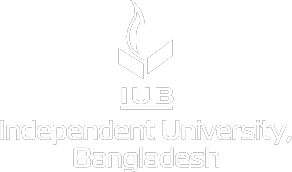BPH 101: Bangladesh Political History
3 credits | Prerequisites: None
Course rationale
The Bangladesh Political History course will give students a comprehensive idea of the history of the Bengal region. It will introduce students to the historical evolution of independent Bangladesh. Students will learn about the political history of this land starting from ancient times, through the medieval Muslim period, the British era, and the Pakistani years. The course ends up with a discussion on the emergence of sovereign Bangladesh. This discussion helps the students to understand Bangladesh’s rich cultural and historical background and the course of events that shaped the national identity of the people. The course has been designed to accommodate students from multidisciplinary backgrounds and enrich their knowledge of various aspects of the political history of Bangladesh
Course content
Introduction to the Course; Bengal: Land & People, Riverine Bengal: Land & People, Ancient Period of Bengal, Arrival of the Muslims; Independent Sultanate of Bengal and Mughal time, Bengal Under the Nawabs and then the EIC, Society & Economy of Bengal up to the Nawabi Rule, Arrival of the Europeans, Battle of Palashi (1757) & Beginning if the East India Company Rule up to the Sepoy Mutiny (1857), Bengal Under the British Rule (1905-1947), Reform Movements in Bengal, Peasant Movements in Colonial Bengal, Communal Riots & Legacy of Partition, Pakistan up to 1954, Pakistan Era: Language Movement, United Front & Ayub in Power, Disparity Between the Two Wings of Pakistan, Awami League, Six Point Program, Anti-Ayub Movement and onwards, General Election (1970), Non-Cooperation Movement (up to March 1971), The Liberation War and Emergence of Bangladesh, First Government of Independent Bangladesh, Challenges & Achievements.
Course objectives
- Introduce students to the rich history and culture of Bangladesh.
- Give students extensive knowledge of the key political events that shaped independent and sovereign
Bangladesh. - Develop students’ understanding of the political and social phenomena of Bangladesh.
- Students will have the ability to apply basic concepts of political development, social movements, and the growth of democratic politics in Bengal.
- Students can find and evaluate sources of information about Bangladesh.
References
- Eaton, Richard M. (1996). The Rise of Islam and the Bengal Frontier, 1204-1760. Berkeley: University of California Press.
- Schendel, Willem Van (2009). A History of Bangladesh, New Delhi: Cambridge.
- Ahmed, A F Salahuddin, Chowdhury, Bazlul Mobin (2004). Bangladesh National Culture and Heritage, An Introductory Reader. Dhaka: IUB.
- Meghna, Guhathakurta, Schendel Willem Van (ed.) (2013). The Bangladesh Reader: History, Culture, Politics. London: Duke.
- Chatterji, Joya (1994). Bengal Divided: Hindu Communalism and Partition, 1932-1947. Cambridge: Cambridge University Press
- Ali, Sheikh Maqsood (2017). From East Bengal to Bangladesh. Dhaka: UPL.
- Jahan, Rounaq (1972). Pakistan: Failure in National Integration. Dhaka: UPL.


